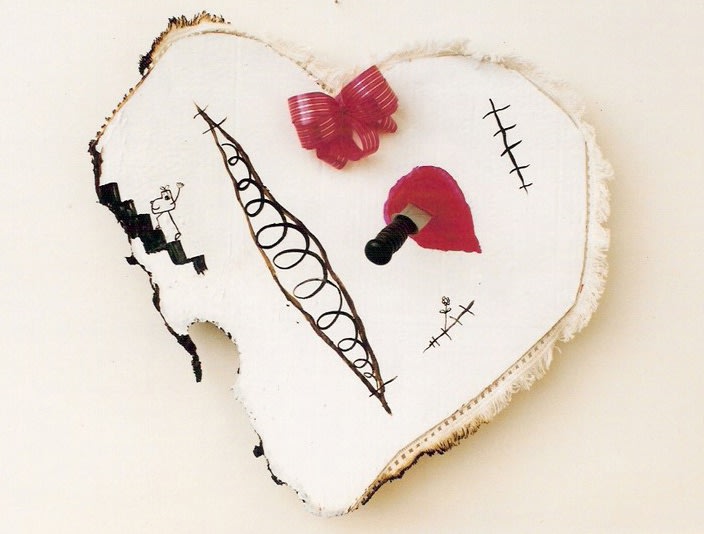When I was 19, I wrote a piece against Fernanda Laguna. I wasn't aware of Marcel Proust's teenage masterpiece, Against Sainte Beuve, but my intentions then were similar. It is, basically, a long lecture, four pages long, in which I rejected in detail every single project Fernanda had been involved in until that point. Besides, it also enacted a disapproving stance towards, let's call it, her general position in the Buenos Aires artistic scene.
The text mentions many artists, and many very local issues, at the same time as presenting the illusions of a young artist whose future is taking shape through contrast and hate towards an established figure of the local cultural milieu. Back then, Fernanda was to me the contrary of a role model.
Fernanda Laguna's work claims its place between her paintings, her poetry and the creation of projects that take different forms, but which always involve a physical space. Fernanda has created many such spaces in Buenos Aires since 1998. Many of us consider her a reference in the field of curating. Her spaces combine the spontaneity of a casual meeting with the planning of an event, which is something very difficult to accomplish.
In this text from 2009 I reviewed every aspect of her work that I considered offputting: its imaginary sociability, its stupid friendship culture. I was bothered by a particular aspect that would later be very important to me, i.e. the creation of projects in partnership with close, loved people. It may have been that, at that point in my life, I just needed someone to put the blame on, someone to fight or have a feud with, just to clear up my own ideas. The text is a desperate collage, made up of fragments of other people's texts, and certainly intended as a provocation.
By the end of the 19th century in Buenos Aires, Eduardo Schiaffino, artist and founder of the Museo Nacional de Bellas Artes, had a duel with art critic Eugenio Auzón, after an unresolved debate they had in the local press about the possibility, nature and main features of a national art. When printed words weren't enough anymore, they resorted to swords. This fact serves as a diffuse model for this show, which has been formatted as a court session, with the victim, the judge, witnesses, and the general public: it's an instance at which we will try to solve a problem impossible to resolve with words.
I've chosen two of Fernanda's videos for this exhibition. These are the kind of works which would have irritated me back in 2009. But they also enact a public presentation of her work, in a more conclusive manner than any other individual piece. In one of the videos she presents us a studio and comments on her works, speaking in (broken) English; in the other one, she whines putatively about her sentimental situation and starts selling us several movies in bootleg DVD copies, as the ones seen on offer in the streets of Buenos Aires.
I've chosen to include my text from 2009 in the show because it clarifies the type of discussion Fernanda's work still arouses in Buenos Aires.
I've also invited Débora Delmar and Básica TV to present works as commentators, pundits or TV experts, thus providing tentative answers to the question: how to resolve hatred? As mediators and judges - Fernanda being the accused - their works present partial solutions, between conquest and surprise.
I met Fernanda in 2008, at the parking lot in the back of the Faculty of Social Sciences, in Buenos Aires. She managed then, in an instant, to sell me all of her literature, composed of small, photocopied plaquettes she herself had written, designed and printed. That this text is written in the first person is, probably, an homage to those years of teenage hatred.

